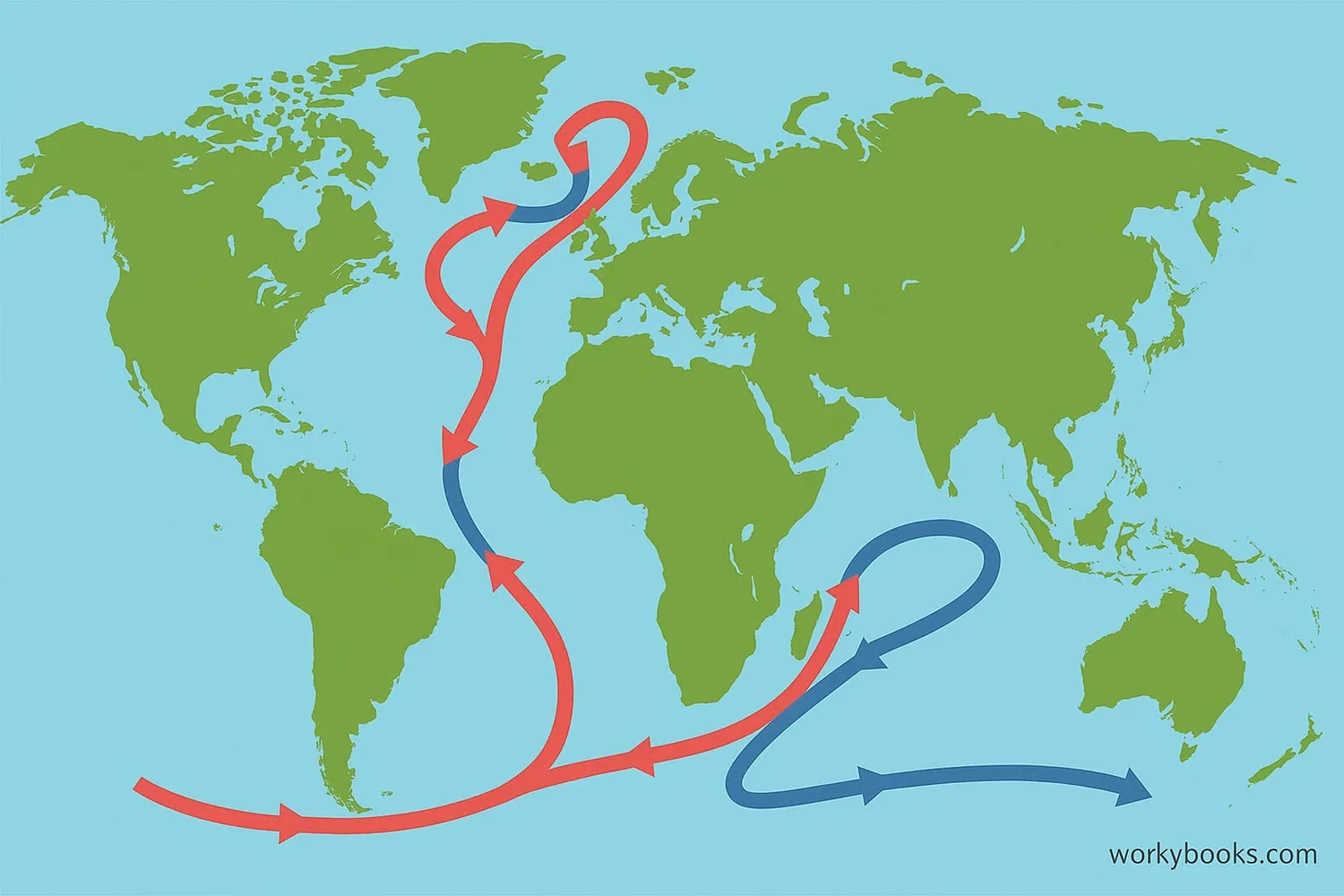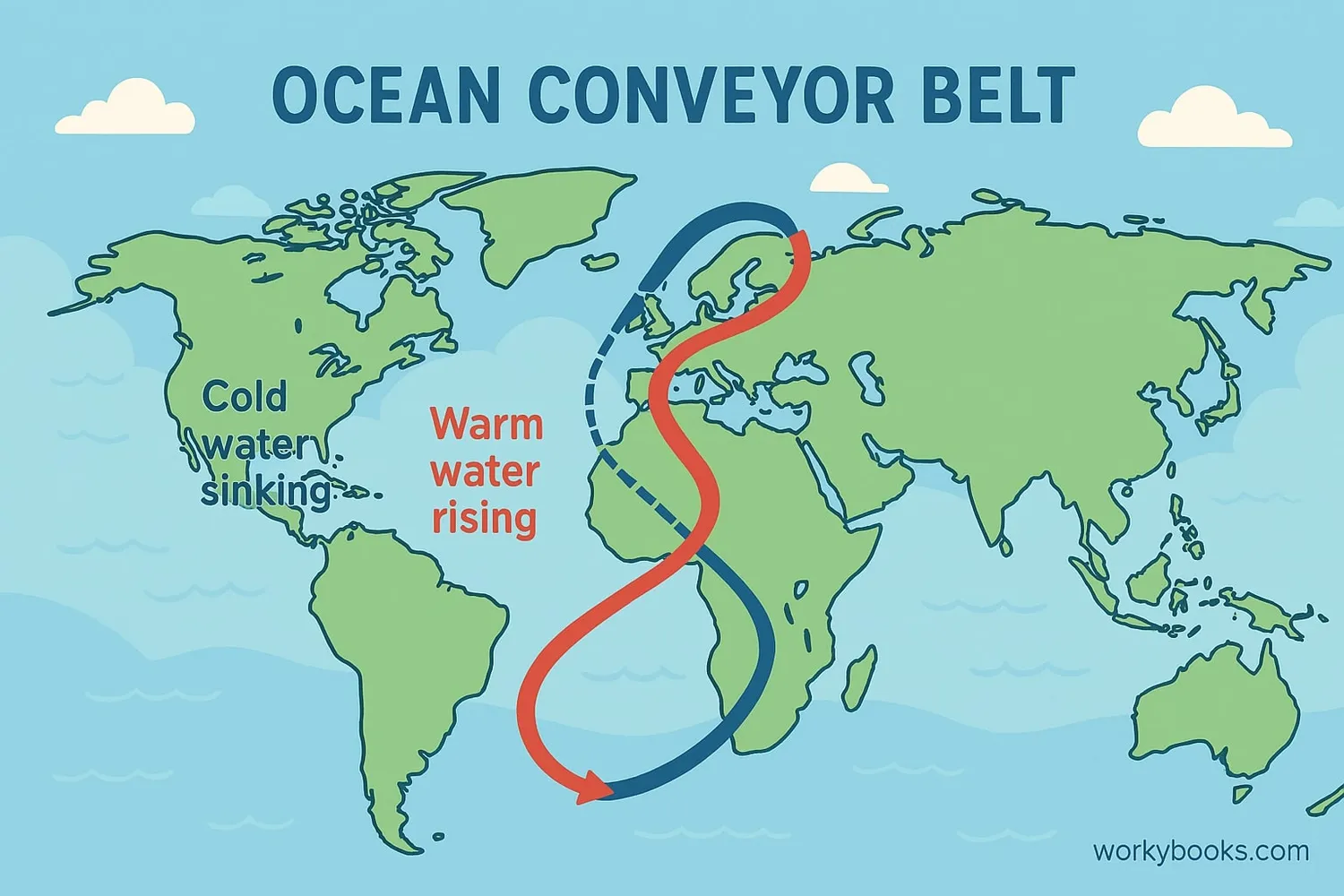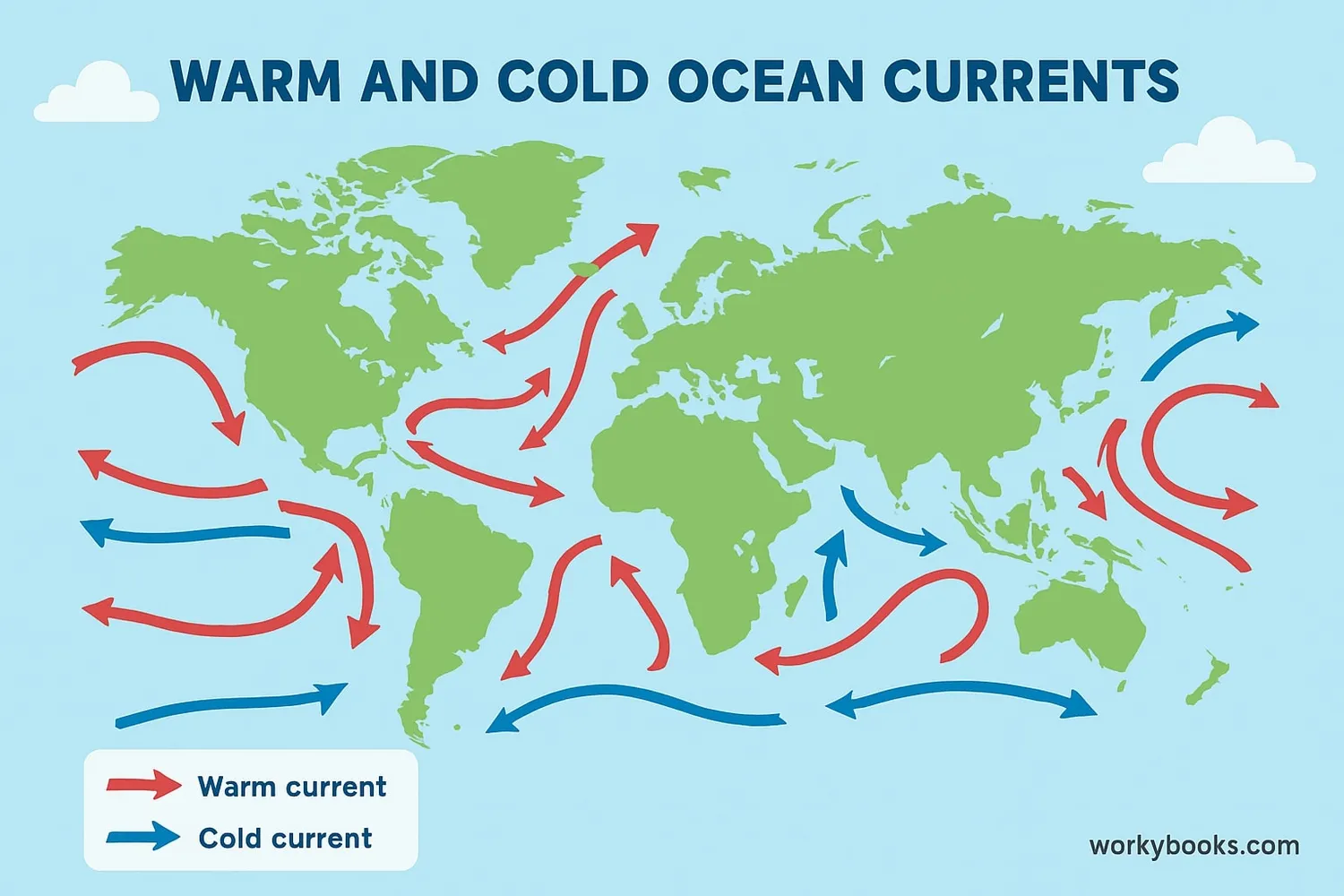The Ocean Conveyor Belt - Definition, Examples, Quiz, FAQ, Trivia
Discover how ocean currents move water around the entire planet
What is the Ocean Conveyor Belt?

The ocean conveyor belt, also known as thermohaline circulation, is like a giant underwater river system that moves water all around our planet! It's a continuous flow of ocean currents that carries water from the surface to the deep ocean and back again.
This amazing system is powered by two things: temperature (thermo) and saltiness (haline). Cold, salty water is heavier and sinks, while warm water rises. This movement creates a global circulation pattern that acts like a massive conveyor belt moving water through all the world's oceans.
Did You Know?
The entire ocean conveyor belt takes about 1,000 years to complete one full loop around the Earth!
How the Ocean Conveyor Belt Works

The ocean conveyor belt moves water around the globe through a fascinating process:
Cold Water Sinks
Near the poles, cold water becomes saltier and denser, sinking to the ocean floor
Deep Currents Flow
This cold water flows along the ocean bottom toward the equator
Water Warms Up
As the water moves toward warmer regions, it gradually heats up
Water Rises
Warmed water becomes less dense and rises to the surface
Surface Currents
The water flows back toward the poles along the surface
This continuous loop connects all the world's oceans. The Gulf Stream is part of this system - it brings warm water from the tropics to the North Atlantic, helping to keep Europe warmer than it would otherwise be.
Current Speed
While surface currents can move at several miles per hour, deep ocean currents in the conveyor belt move slowly - only about 1-2 inches per second!
Why the Ocean Conveyor Belt is Important

The ocean conveyor belt is vital for life on Earth for several reasons:
Climate Regulation
Transports heat from the equator toward the poles, helping regulate Earth's temperature
Nutrient Distribution
Brings nutrients from the deep ocean to the surface, supporting marine life
Weather Patterns
Influences weather systems and precipitation around the world
Without the ocean conveyor belt:
• Coastal regions would have much colder temperatures
• Marine ecosystems would lack vital nutrients
• Weather patterns would be dramatically different
• The ocean would have less oxygen in deep waters
Scientists are studying how climate change might affect this important system, as melting ice could potentially slow down the conveyor belt.
Ocean Conveyor Belt Quiz
Test your knowledge about the ocean conveyor belt with this quiz! Answer all 5 questions to see how much you've learned.
Frequently Asked Questions
Here are answers to some common questions about the ocean conveyor belt:
Fun Ocean Conveyor Belt Trivia
Discover some amazing facts about the ocean conveyor belt!
Massive Volume
The ocean conveyor belt moves about 100 times more water than all the rivers on Earth combined! It transports around 15-20 million cubic meters of water per second.
Slow Journey
A drop of water starting in the North Atlantic might take 1,000 years to complete the full conveyor belt journey around the globe before returning to its starting point.
Heat Transport
The Gulf Stream, part of the conveyor belt, carries about 100 times more heat than all the world's power plants produce. This helps keep European winters milder.
Ancient Discovery
While the full conveyor belt concept is modern, Benjamin Franklin mapped the Gulf Stream in the 1700s to help ships cross the Atlantic faster.





